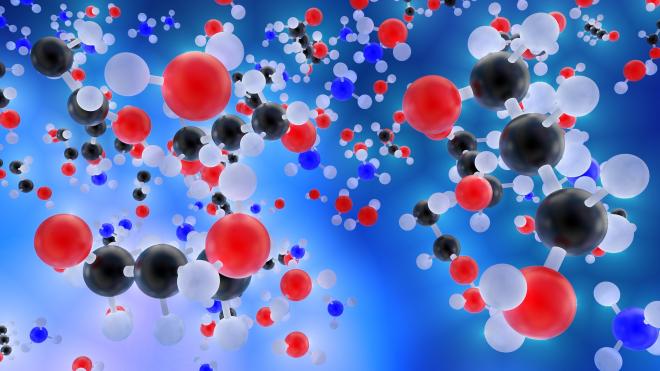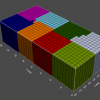Superatom modelling unlocks the next generation of materials
The Challenge:
Superatoms are a unique group of molecules with promising applications in materials science and synthetic chemistry. A superatom is a nanoscale collection of normal atoms, which has the same kind of electronic structure (i.e., highly symmetric electronic orbitals, that occur in shells with predictable variations in symmetry and energy) as atoms. Superatoms can serve as building blocks for functional materials. The ability to design superatoms, based on existing atoms combined in ways that reproduce the symmetry atom-like symmetry, offers a new concept for materials design. Up to now, only a few superatom-based bulk materials have been synthesized.The Solution:
University of Auckland physicists ran electrochemical and geometric modelling of superatoms to determine the best candidates for synthesis and their properties.The Outcome:
Several promising superatomic structures were identified mimicking the behaviour of common salts. These models saved hundreds of hours of synthesis. The identified superatoms could be used as stable catalysts in chemical reactions and building blocks of desirable materials.
University of Auckland physicists are using NeSI’s Mahuika cluster to model the behaviour of a unique set of molecules called superatoms. Superatom are atomically precise cluster that gives rise to collective behaviours that mimic those of traditional atom. Using the superatom as a building block, we can achieve atom-based functional features to achieve high performance or even revolutionary applications. Dr Celina Sikorska is a Research Fellow at University of Auckland, modelling the behaviour of superatoms.
“Superatoms can be promising substitutes for elemental atoms. They can become building blocks for functional materials. The main advantage of using superatoms as building blocks is that the properties of the resulting materials can be precisely controlled by adding, removing, or substituting a single atom within superatomic unit,” said Celina.
Superatoms have the potential to replace expensive or hazardous catalysts and create new functional materials. To uncover their applications, researchers need to determine their electrochemical properties. Celina uses computational chemistry with quantum mechanics technics to design novel superatoms and investigate their electronic properties.
“I design my initial structures, then perform optimization calculations for those structures to find the lowest energy systems. In the next step, I investigate their electronic structure and possible chemical applications. The lowest energy structures with desirable properties (e.g., redox activity) are the most viable candidates for laboratory synthesis.”
Celina used the atomic scale materials software, VASP, to determine the electronic structure of the superatoms. Celina worked with NeSI support staff to install the latest VASP package onto Mahuika.
“NeSI staff were helpful from the very beginning. We had a license for the newest version of VASP we wanted to be installed. The support staff installed it and had it running without extra steps on our behalf.”
Celina then used NeSI high-performance computing to predict crystal structures of binary assemblies of atomically-precise clusters. These structures showed how superatoms stack together, and how the structure and properties of superatomic solids can be tuned upon single atom substitution. A focus of her research was finding superatomic crystal structures that mimicked simple salts, such as sodium chloride (table salt) and zinc sulphide (a common pigment).
“NeSI allowed us to predict these structures without experimental data. This saved money and hundreds of hours of synthesis time. I was able to check the electrical properties, such as whether the superatom was an insulator or a semiconductor. This allowed me to determine where it could be used in material science.”
Celina worked with NeSI’s Consultancy team when problems arose. Predicting the atomic properties of systems composed of over a hundred atoms requires an enormous amount of processing power. Creating a model that could resolve the structure and properties of the superatoms to a high enough detail to inform experimenters would be impossible on a standard laboratory computer. The data required hundreds of core hours on NeSI’s Mahuika cluster. To ensure Celina received the maximum possible findings from her time, Consultancy team members provided code optimisation support. This reduced run-time and helped problem-solve her memory allocations.
“I am very happy I had NeSI’s consultants; they were very helpful. When there were memory issues, or I had a problem with my code, they were always happy to advise. Because I perform resource-expensive and time-consuming calculations, I had to make sure I was using my allocation efficiently.”
Celina’s research will help synthetic chemists discover new ways to build superatoms in the laboratory environment. These superatoms could become the building blocks for the next generation of materials science and synthetic chemistry. Fundamental research projects are vital for keeping New Zealand’s research community globally competitive. This research is possible through research like Celina’s, coupled with NeSI’s high-performance computing resources.
Do you have an example of how NeSI support or platforms have supported your work? We’re always looking for projects to feature as a case study. Get in touch by emailing support@nesi.org.nz.







